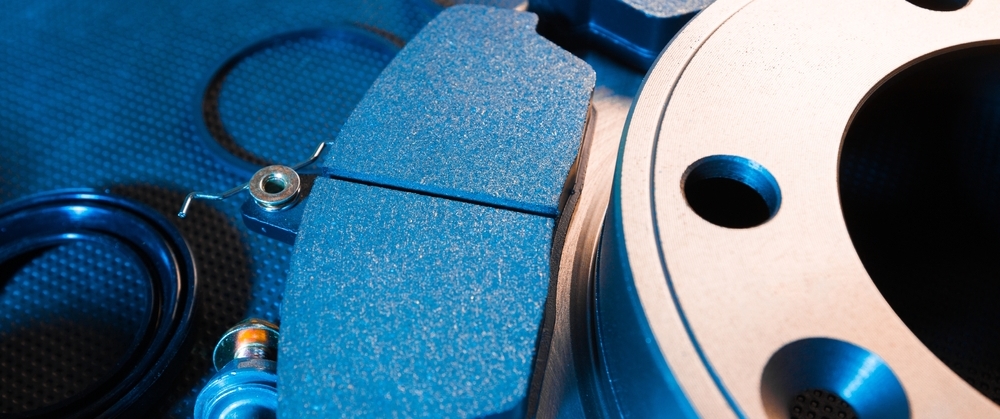
22 Aug Best Brake Repair, Inspection, & Maintenance | Ann Arbor, MI
 I can’t stress enough how important routine brake maintenance is for vehicle safety. The current population of the United States in 2024 is estimated to be 341,814,420 people. It boggles the mind when you think about how that number translates into drivers, pedestrians, scooters, electric bikes, and public transportation. So, when you’re driving through Ann Arbor, MI, with worn brake pads or an overdue braking system inspection, be safe and schedule a brake repair service.
I can’t stress enough how important routine brake maintenance is for vehicle safety. The current population of the United States in 2024 is estimated to be 341,814,420 people. It boggles the mind when you think about how that number translates into drivers, pedestrians, scooters, electric bikes, and public transportation. So, when you’re driving through Ann Arbor, MI, with worn brake pads or an overdue braking system inspection, be safe and schedule a brake repair service.
Braking System Warning Signs
Modern cars have many electronic warning signs to signal the driver when any system malfunctions. We have dashboard warning lights, interactive display screens, and even emails or text messages detailing the issue and the required service. However, as a responsible motor vehicle owner, we mustn’t depend on technology 100% of the time. We must stay aware of our car’s overall performance and act when changes occur. Below are a few warning signs for braking systems.
Squealing Brakes
Brakes will make noise when they start to wear out. This is one way parts manufacturers signal the vehicle owner when it’s time to replace the brake pads or shoes. Dirty, wet, and rusted brake components can cause unusual sounds when engaging the brakes. If you hear grinding, scraping, or squealing sounds while driving, schedule a brake inspection to identify the problem.
Spongy Brake Pedal
A spongy brake pedal occurs from worn brake shoes (drum brakes) or worn brake pads (disc brakes). Schedule a brake inspection service if your vehicle’s brake pedal response changes suddenly or goes farther toward the floor before engaging the brakes. Your vehicle’s safety depends on a reliable and responsive braking system.
Longer Stopping Time
If your vehicle takes longer to stop than expected, it’s time to schedule a brake inspection. Longer stopping time may be a simple maintenance task, like replacing worn brake pads or shoes. However, it is also an early sign of an overheating braking system, which could lead to expensive brake repairs down the road.
Dashboard Brake Light
The dashboard brake light usually indicates a problem with the hydraulics. Schedule a brake inspection as soon as possible. It is never safe to drive while the dashboard brake light illuminates. It’s good to note that the dashboard brake light may also indicate the parking brake is engaged in some vehicles.
Braking System Components
Modern cars have friction brakes on all four wheels, operated by a hydraulic braking system. They may be disc brakes and/or drum brakes. The front brakes play a more significant role in stopping the car than the rear ones. The car’s weight is distributed forward onto the front wheels when braking due to momentum. Auto manufacturers often equip cars with (more efficient but more expensive) disc brakes in the front and drum brakes (slightly less efficient and less expensive) in the rear. Some high-end or high-performance cars feature an all-disc braking system, while some older or smaller cars use an all-drum braking system.
Disc Brakes
Disc brakes have a smooth metal disc that rotates with the wheel. A caliper acts like a clamp that holds the brake pads against the disc when the driver engages the brake pedal. During a brake inspection, your service technician will visually inspect the following disc brake components:
- Backplate
- Brake Hose or Lines
- Brake Pads
- Calipers
- Disc
- Pistons
- Wheel Hub
Drum Brakes
Drum brakes have a hollow drum that rotates with the wheel. It has an open back covered with a stationary backplate containing two curved brake shoes. The shoes move outward, pressing against the drum when the driver engages the brake pedal. During a brake inspection, your service technician will visually inspect the following drum brake components:
- Adjuster Ratchet
- Backplate
- Brake Drum
- Brake Pipe or Lines
- Brake Shoes
- Cylinder
- Lining
- Pistons
- Return Springs
Regenerative Brakes
Hybrid autos and fully electric vehicles (EVs) primarily use regenerative brakes. With regenerative braking, the system that powers the vehicle does most of the braking. When you engage the brake pedal, the vehicle’s electric motor goes into reverse mode (runs backward), slowing the car’s wheels. Hybrids and EVs also have a back-up friction braking system.
There are a lot of variables with hybrids and EVs, so read your owner’s manual for specific details on your vehicle’s regenerative braking system. During a brake inspection, your service technician will visually inspect the following regenerative brake components in addition to the friction braking system components:
- Brake Controllers
- Control Modules
- Onboard Computer System
- Software Updates, Errors, etc.
Brake Fluid
Brake fluid is a hydraulic liquid (glycol or silicone-based) used in friction-based braking systems. It lubricates and protects your braking system components from corrosion. It’s hygroscopic, which means it attracts and retains moisture. Brake fluid is a consumable item that requires regular inspections and periodic replacement.
Routine Brake Maintenance
If you live in Ann Arbor, MI, you know that the city applies road salt to the road during the winter. Road salts are really hard on metals. But did you know your braking system needs regular inspections and routine maintenance to prevent excess corrosion from road salts? Your brake pads & rotors (or brake shoes & drums) can be damaged or even seized from lack of maintenance.
Factory-Recommended Service Intervals
Factory-recommended braking system service intervals vary by manufacturer. Typically, auto manufacturers recommend a brake inspection every 5,000-7,000 miles or 4-6 months, whichever comes first. Brake pads and brake shoes wear slowly, but actual wear depends on driving style, vehicle type, and environmental factors. Read your owner’s manual for the service intervals best suited to your vehicle.
Brake Repair Service in Ann Arbor, MI
Include regular brake inspections in your routine auto maintenance schedule. You can trust Ron’s Garage to inspect, repair, or replace any necessary brake components, regardless of which type of braking system your vehicle uses. Our experienced service technicians use only the highest quality parts to ensure your vehicle’s brakes function correctly.
Schedule Your Brake Repair & Inspection
Call us at 734-961-4701 or visit online to schedule your Ann Arbor, MI, brake inspection today!
Ron’s Garage in Ann Arbor, MI, covers brake repairs and part replacements under our exceptional 2-year/ 24,000-mile warranty!

